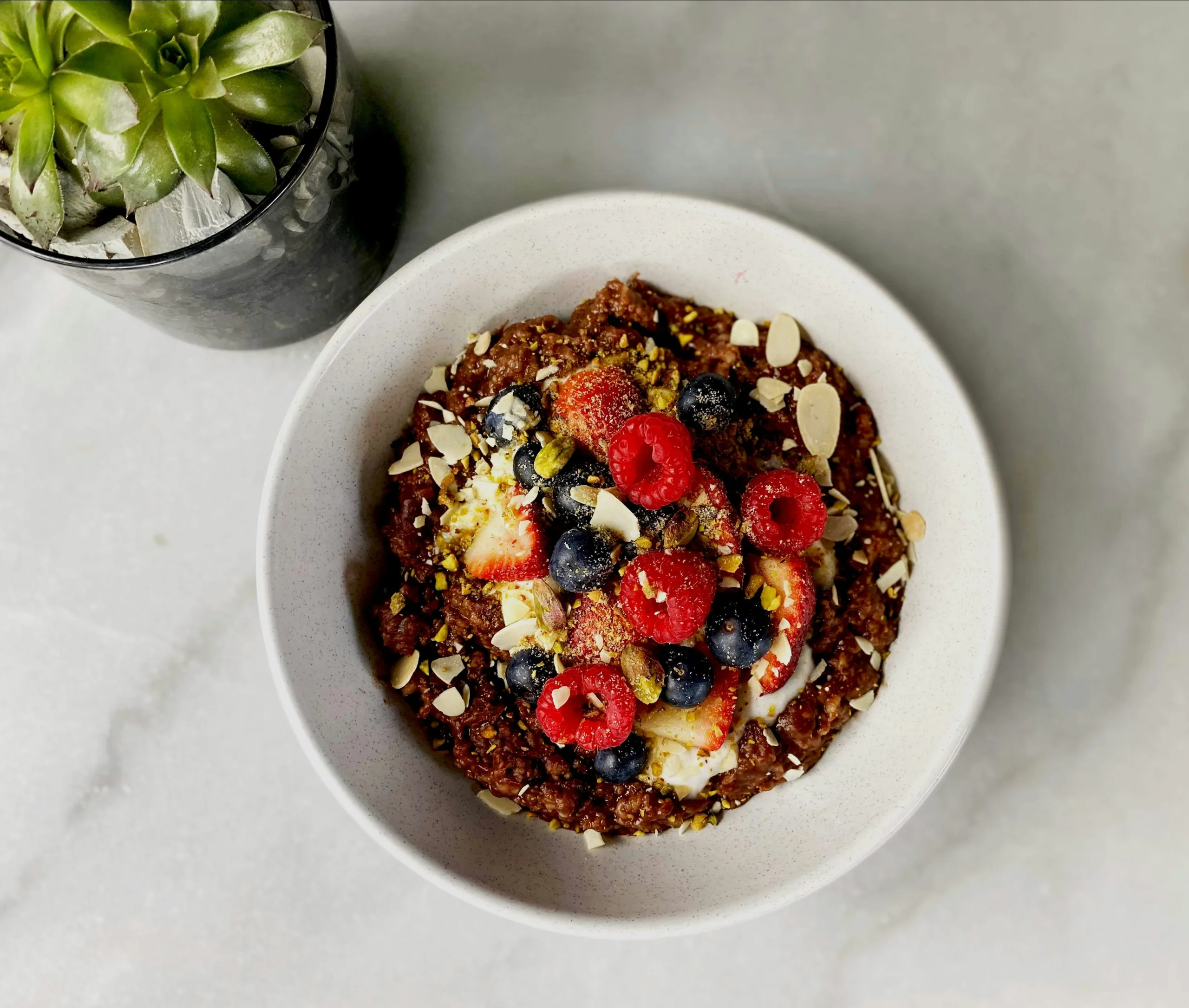Food combining has been a buzzy nutrition topic for years, but the practice has been going on a lot longer than you think — Ayurveda, a traditional health system in India, recognized the importance of proper food combining over 3,000 years ago!
One of the core principles of Ayurveda revolves around the fact that digestion is essential for good health — a topic we can all get behind today. Here, different ways of looking at this complex — kind of controversial— style of eating.
The Origin of Food Combining
According to Ayurveda, different types of foods have different digestive requirements and not combining them in the right ways can lead to digestive distress, which impedes overall health. Ayurveda categorizes foods into six tastes and three energies, and advocates for eating foods that balance each other out. (For example, sweet foods can be balanced with sour foods, and hot foods can be balanced with cold foods.)
In addition to Ayurveda devotees, many other health practitioners have explored the importance of food combining. In the 1800s, a French physician named Antoine Bechamp developed the theory that certain foods should not be consumed together because they would create an unfavorable environment in the body. In the 20th century, famous nutritionist Adelle Davis was a key advocate of thoughtful food combining— a trend that became more widespread in the 1980s when many books were published on the topic.
When you distill the various principles, food combination essentially divides foods into three components: taste, energy and post-digestive effects.
Taste refers to the six flavors: sweet, sour, salty, bitter, pungent and astringent. According to Ayurveda, each flavor has a unique effect on the body and can influence our digestive systems, hormones and energy levels. To optimize digestion and nutrient absorption, that system recommends including all six tastes in each meal in appropriate proportions— a balanced meal might include sweet potatoes (sweet), kale (bitter), and chicken (pungent).
Energy refers to the effect that a food has on the body—heating, cooling, and neutral. The thinking being is that eating too many “heating” foods, such as spicy dishes or excessive amounts of red meat, can cause inflammation and digestive issues. Conversely, eating too many “cooling” foods, such as raw fruits and vegetables, can weaken the digestive fire and impede nutrient absorption. Balance is the goal here.
Post-digestive effects refer to the impact that a food has on our bodies after digestion. For example, some foods leave an acidic influence in our bodies, while others have an alkalizing effect. Again, maintaining a healthy pH balance in the body is the goal.
The question is: Are all of these balancing acts valid from a health standpoint?
RELATED: Diets Decoded: The Ayurvedic Diet
What Science Say About Food Combining
There’s a limited amount of rigorous scientific research on food combining. The available studies often only draw from small sample sizes and lack control groups or suffer other methodological issues. Many of the positive claims come from anecdotal reports rather than well-designed research.
Those proponents suggest that certain people might have specific digestive issues that make food combining beneficial for them.
Here’s what we do know:
- Digestive Enzyme Compatibility: One of the key tenets of food combining is the belief that proteins and carbohydrates require different digestive enzymes that are incompatible. However, the human digestive system is designed to handle a variety of foods simultaneously. For example, the stomach produces hydrochloric acid and pepsin, which help digest proteins. At the same time, amylase, which breaks down carbohydrates, is secreted in saliva and works in the stomach and small intestine.
- Alkaline vs Acidic Foods: This idea is not supported by scientific evidence. The stomach’s acidic environment (with a pH of 1.5-3.5) is capable of digesting both acidic and alkaline foods.
- Weight Loss Potential: Most likely, any weight loss experienced from a diet that revolves around food combining is likely due to a reduction in caloric intake rather than the specific combination of foods. No high-quality studies have shown that food combining diets are more effective for weight loss than other diets with similar calorie and macronutrient compositions. In fact, an International Journal of Obesity study found that a food-combining diet did not achieve any additional weight loss or fat loss compared to a balanced diet made up of proteins, fats, and carbs.
The complexity deepens as some enthusiasts also consider the varying digestion rates of certain foods. The notion that fruits can hinder digestion when paired with protein and fat stems from this disparity. A divergence arises as protein and fat take longer to break down compared to carbohydrates like fruit. Consequently, the carbohydrates in fruit linger in the digestive tract for an extended period, leading to undesirable fermentation and digestive discomfort.
Pairing fruits with proteins and fats, however, can be advantageous for digestion, particularly in regulating blood sugar levels. Consuming carbohydrates in isolation results in rapid breakdown and subsequent spikes in blood sugar levels. Conversely, when accompanied by slow-digesting foods such as proteins and fats, the digestion of carbohydrates slows down, resulting in a more gradual increase in blood sugar levels. This capability aids in averting drastic blood sugar fluctuations, fostering improved digestion.
RELATED: Food Combining: The Facts And 5 Combos That Make Sense For Your Health And Life
The Bottom Line On Food Combining
As with many dietary approaches, what works best can vary. If someone finds that a certain way of eating makes them feel better, they might choose to continue with it, provided it doesn’t lead to any nutrient deficiencies or other health issues.
For specific populations, such as people with blood sugar management needs (like people with diabetes), eating foods higher in protein and healthy fat before a higher carb item such as fruit has shown to be beneficial for insulin control.
One potential universal downside? Food combining can make meal planning even more complicated and restrictive — and that’s no small thing to consider in and of itself.
It’s a good idea to consult with a healthcare or nutrition professional when considering significant dietary changes.
(Image: Unsplash)






























